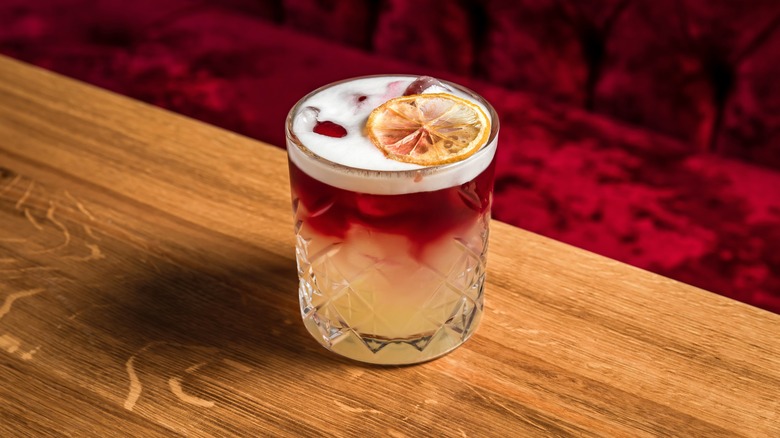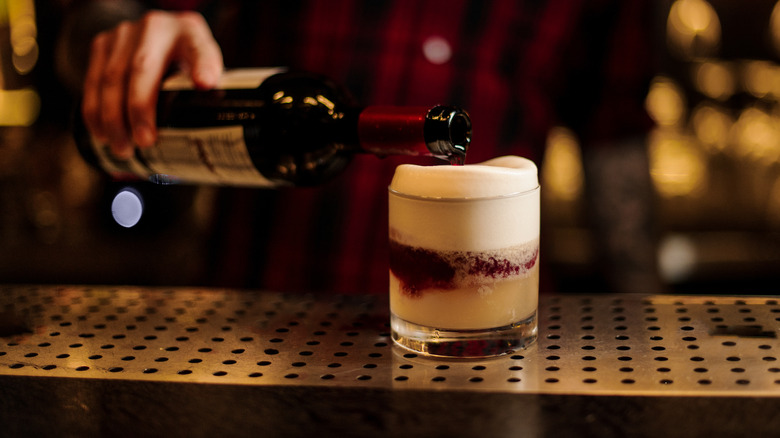The Mysterious Origins Of The New York Sour Cocktail
Comprised of picturesque layers, the New York Sour cocktail gets its color from red wine and lemon juice. It contains whisky, sugar syrup, angostura bitters and, sometimes, egg whites that lend a unique flavor that's similar yet different from a traditional whisky sour. Usually, the whisky of choice is bourbon or rye. As popular as the New York Sour has become in recent years, it's hard to pinpoint exactly where it all began.
Despite its name, the New York Sour probably originated in 1880s Chicago. It has gone by several names over the years, such as the Southern Whisky Sour, the Continental Sour, the Claret Snap, and the Brunswick Sour. It wasn't until it picked up speed in New York City that its new name was born.
By the time the New York Sour burst onto the scene, sours in general were already being enjoyed throughout America. The cocktail wouldn't have been possible without the invention of these sours, which can likely be attributed to the British Navy.
How sours came to be
In the 1600s, alcohol served a unique role for the British Navy. In addition to being a tasty way to pass time, the Navy whipped up a mixture of Caribbean rum and lime to ward off scurvy –- a disease that occurs when your body is lacking Vitamin C. Of course, the lime, rather than the rum itself, was the key in taking care of this issue.
Upon returning home, Navy members would share their newfound creations with locals, eventually leading to the invention of punch houses. Punch houses quickly became the place for English middle-class men to meet, socially.
The whisky sour specifically was first detailed in Jerry Thomas' "The Bartender's Guide" in 1862. Whisky sours are quite similar to New York Sours, with the main difference being the red wine topping. It is said that the New York Sour was made by the same Chicago bartender who created the Manhattan, though that fact can't be verified. Today, the New York Sour's popularity has hit a new height due to its beautiful coloration that's worthy of a photo or two.

